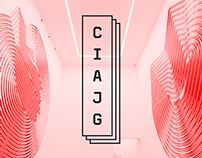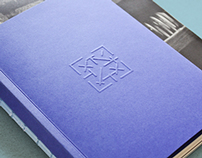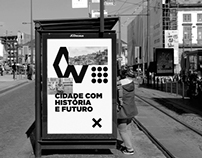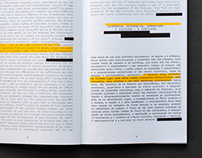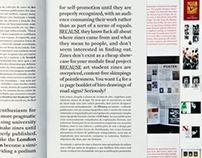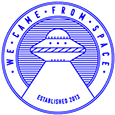The proposed briefing for this project was to design a photo-biography of Alberto Sampaio, a well known 19th Century Portuguese historian.
Going through the provided contents, some issues raised as quite evident
The available images were mostly from written records, such as letters exchanged with renown personalities from the same period, the photographic material was very limited in quantity, and the written information difficult to lay out, being mainly based on little transcriptions from the mentioned messages, thus impossible to handle as a continuous text thread.
The available images were mostly from written records, such as letters exchanged with renown personalities from the same period, the photographic material was very limited in quantity, and the written information difficult to lay out, being mainly based on little transcriptions from the mentioned messages, thus impossible to handle as a continuous text thread.
Therefore, we've decided that some of the following topics should be notorious elements of the outcome object
- Alberto Sampaio was born in the midst 19th century, lived until the very early 20th, and here we are to tell his story on the 21st. So we've always pictured mixing contemporary and classic storytelling elements in our design.
- The book should not look like an epitaph, but instead, celebrate his life, significance and achievements.
- While maintaining the readers focus, the book should make him/her eager to turn to and check the next page, pages.
- The book should not look like an epitaph, but instead, celebrate his life, significance and achievements.
- While maintaining the readers focus, the book should make him/her eager to turn to and check the next page, pages.
In order to layout such intentions, we've approached the book's layout bearing the following in mind
- The grid should be highly flexible and make room for a great variety of graphic approaches. By ignoring the book's spine, we were allowed to use the central space of the book, making it possible to display the most interesting images in big scales and to grant an easy graphical fade from one page to the other, creating a feeling of horizontal "timeline" navigation.
- The unusual book binding solution we've achieved, endorses a complete opening of the spreads, displaying them in its totality without any page curvature, therefore making the use of the previous concepts possible.
- While using the same font, we've decided to develop 3 typographic styles to enhance the variety of transcriptions and to make the design dynamic and interesting.
- We've used classical 19th century books and the elements of the typical Guimarães embroidery, to design the pattern used on the spine and inside the cover, adding a little twist to it, to achieve a more contemporary feeling and look.
- The unusual book binding solution we've achieved, endorses a complete opening of the spreads, displaying them in its totality without any page curvature, therefore making the use of the previous concepts possible.
- While using the same font, we've decided to develop 3 typographic styles to enhance the variety of transcriptions and to make the design dynamic and interesting.
- We've used classical 19th century books and the elements of the typical Guimarães embroidery, to design the pattern used on the spine and inside the cover, adding a little twist to it, to achieve a more contemporary feeling and look.
The result is this 420 page book.
Graphic Design
Atelier Martino&Jaña
Pattern and Diagrams
Ana Areias
João (Tae) Castro
Pattern and Diagrams
Ana Areias
João (Tae) Castro
Thank You!


